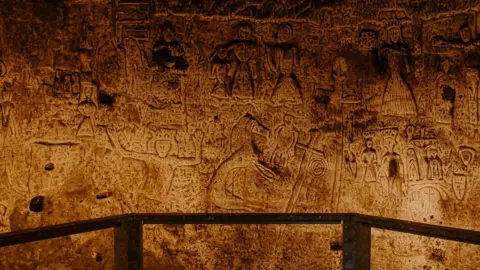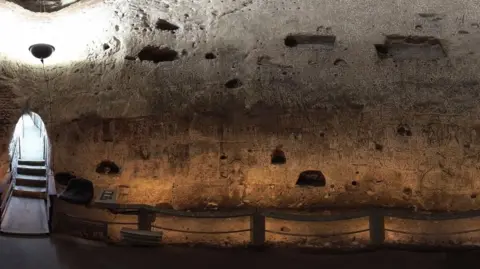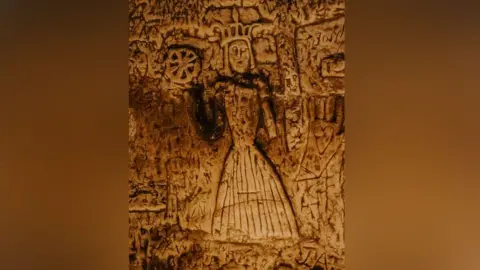Tour guide wanted for 'Knights Templar' cave
 Royston Cave
Royston CaveA museum has been seeking a new tour guide for a medieval cave with mysterious carvings.
Royston Cave in Hertfordshire lies 8m below a crossroads and contains extensive wall carvings, which the museum believes date back to the 1300s.
The cave was discovered accidentally in 1742, and although there are no records about its origin or purpose, the most popular theory is that the Knights Templar may have used it as a secret place of worship.
Emma Shaw, the cave's manager, said the museum was looking for "good communicators who have a love of history" to take on the role.
 Royston Cave
Royston CaveThe man-made chamber was dug into chalk beneath Icknield Way and Ermine Street in Royston.
The carvings on its walls are mostly images of Christian scenes and characters, such as the crucifixion of Jesus and depictions of his disciples.
Four prominent Christian saints are also portrayed, including St Katherine, who is pictured holding the spiked wheel associated with her martyrdom.
The non-Christian carvings include figures of a horse and an Earth Goddess known as a Sheila-na-gig, which are believed to be Pagan symbols for fertility.
Other carvings similar to those in the Royston Cave have been found at Knights Templar sites across Europe, and the religious order had a stronghold in Baldock, Hertfordshire.
Other theories of the cave's origin include that the grotto was used by King James I to practise Freemasonry in 17th Century, while Pagan visitors believe sacred ley lines - which are thought to connect sacred sites with electromagnetic energy - meet in the cave.
 Royston Cave
Royston CaveMs Shaw said the tour guide would "share all the different theories with visitors", some of whom previously have travelled from Australia and the US to visit the site.
"Every tour is different, because visitors also bring information that they have.
"They'll spot something here that they've seen somewhere else and then we can investigate that."
She said the job was "unique".
"Where else is your office a cave underground? It's a great job to have," she added.
Follow Beds, Herts and Bucks news on BBC Sounds, Facebook, Instagram and X.
